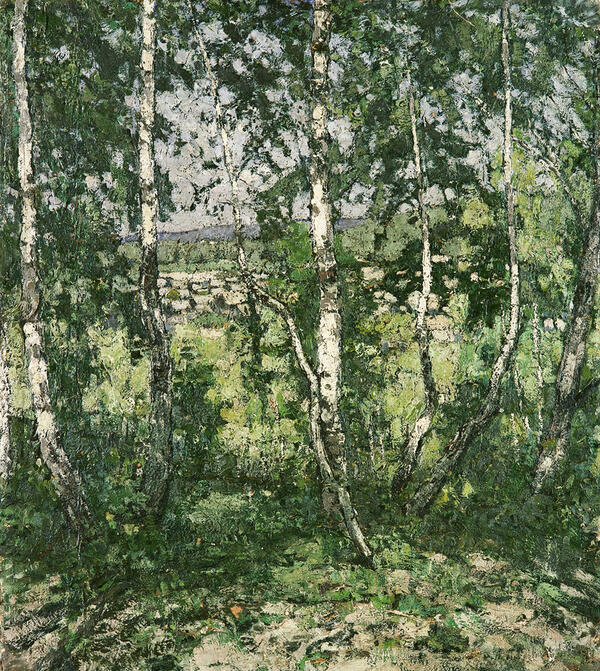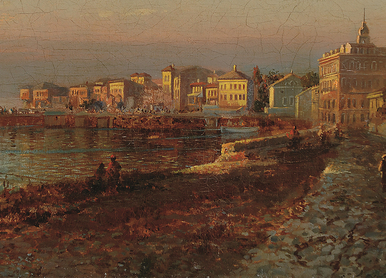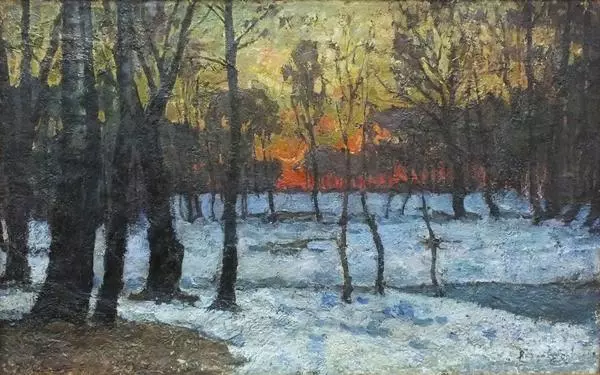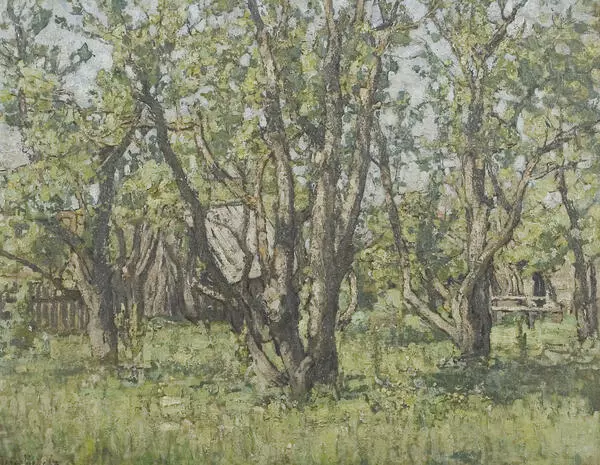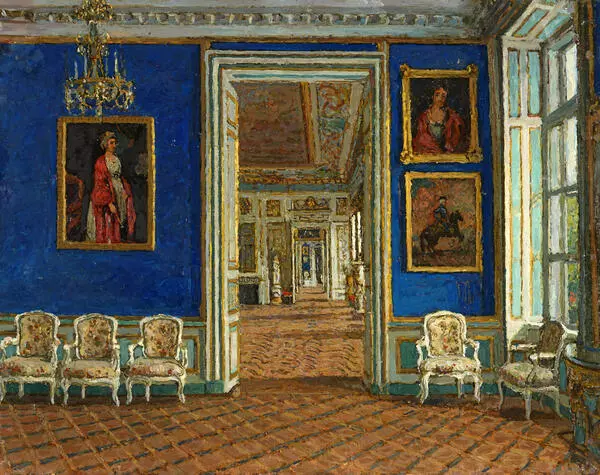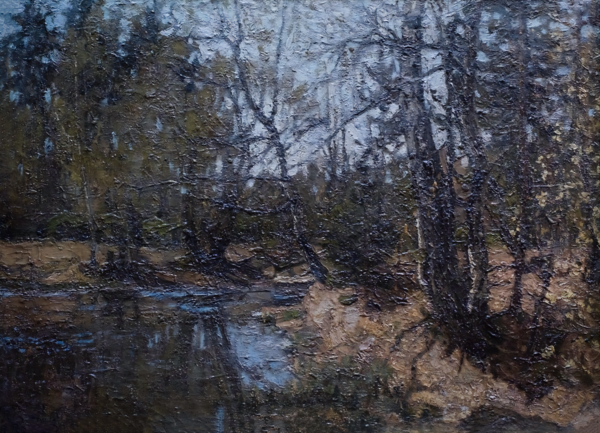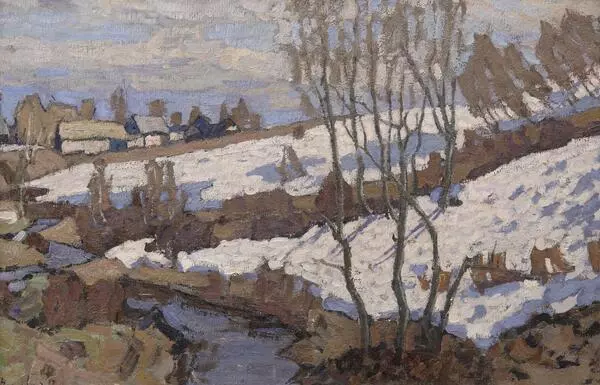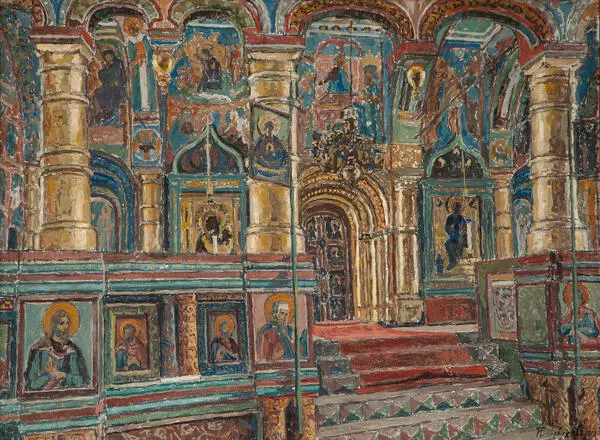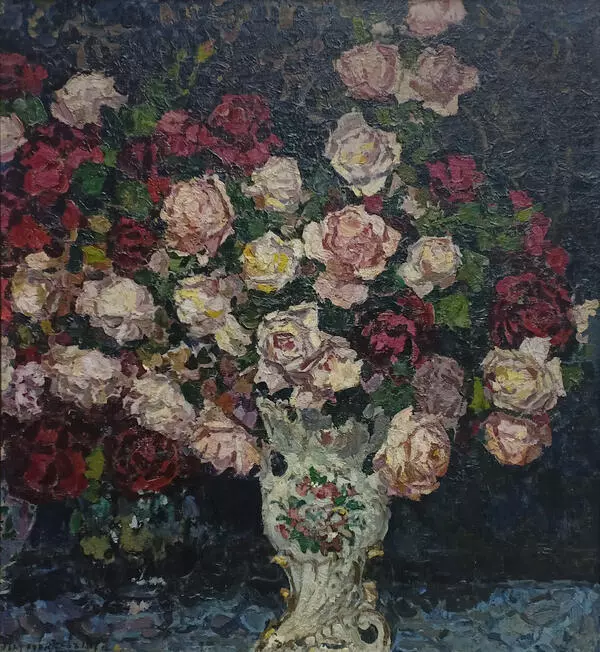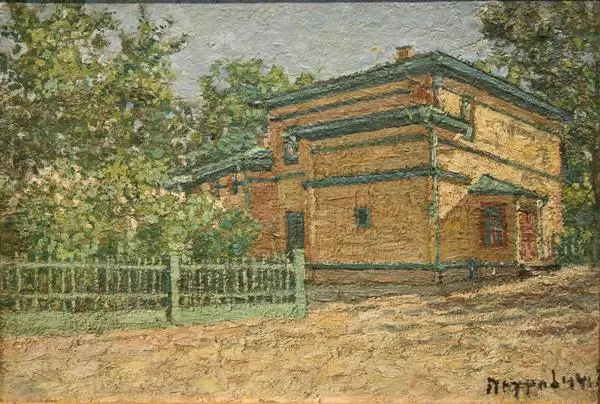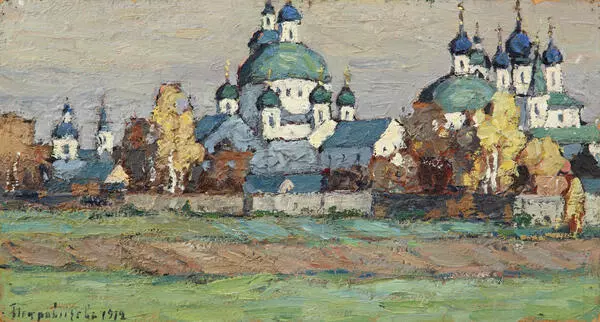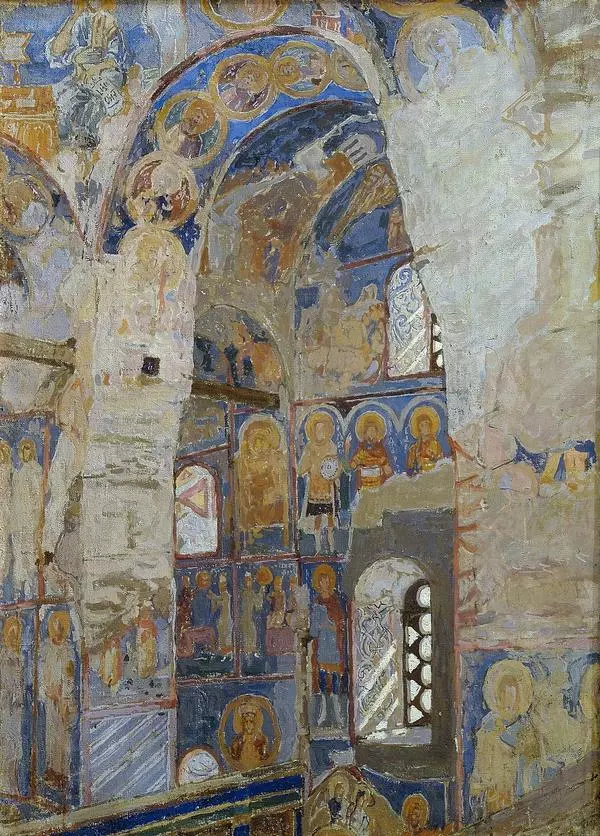Petr Petrovichev was born in 1874 in the village of Vysokovo, the Ugodicheskaya volost, the Rostov district, the Yaroslavl governorate, the Russian Empire (now the Yaroslavl Region). The future artist received his primary artistic education at the Rostov Museum of Church Antiquities, where he met the artist Vasily Vereshchagin. Vereshchagin advised Petrovichev to continue his studies in Moscow even helped him to get a job after the latter’s move to Moscow.
At the Moscow School of Painting, Sculpture and Architecture, Petrovichev was taught by Isaac Levitan and Valentin Serov. He graduated from the college with a major silver medal and the title of “class artist”. Since 1905, Petrovichev participated in exhibitions of the Society of Traveling Art Exhibitions and the Union of Russian Artists. In 1911, Pavel and Sergey Tretyakovs purchased his architectural landscapes and interiors for their collections. Moreover, Petrovichev’s paintings were bought by the Museum of Alexander III and the Museum of the Academy of Arts.
The artist’s first personal exhibition was held from October 7, 1917 to November 5, 1917 at the Art Salon on Bolshaya Dmitrovka Street. “Petrovichev sums up the results of two decades of work and has now collected over two hundred and fifty paintings. This is a stubborn, sincere worker …”, wrote art critic Abram Efros. In 1924, 11 paintings by the artist were displayed at an exhibition of Russian art in New York.
In 1937 — 1943, Petrovichev taught painting and drawing at the Moscow Regional Art School in Memory of 1905. During the Great Patriotic War, he dug ditches and built barriers, for which he was awarded the medal “For Valiant Labor in the Great Patriotic War.”
Petrovichev would repeat the words of his teacher Isaac Levitan about Russian nature being the very source of inspiration for painting and it not needing any additional decoration. The artist preferred calm subjects, depicting white birches, nature at sunset, spring or morning awakening of the world. Throughout his life, he was dedicated to an intimate landscape, which is characterized by lyricism, the desire to convey the changing, momentary states of nature and the play of light and space. He achieved certain effects using a lot of methods of impressionism, such as an open painting manner and textured brushstrokes.
At the Moscow School of Painting, Sculpture and Architecture, Petrovichev was taught by Isaac Levitan and Valentin Serov. He graduated from the college with a major silver medal and the title of “class artist”. Since 1905, Petrovichev participated in exhibitions of the Society of Traveling Art Exhibitions and the Union of Russian Artists. In 1911, Pavel and Sergey Tretyakovs purchased his architectural landscapes and interiors for their collections. Moreover, Petrovichev’s paintings were bought by the Museum of Alexander III and the Museum of the Academy of Arts.
The artist’s first personal exhibition was held from October 7, 1917 to November 5, 1917 at the Art Salon on Bolshaya Dmitrovka Street. “Petrovichev sums up the results of two decades of work and has now collected over two hundred and fifty paintings. This is a stubborn, sincere worker …”, wrote art critic Abram Efros. In 1924, 11 paintings by the artist were displayed at an exhibition of Russian art in New York.
In 1937 — 1943, Petrovichev taught painting and drawing at the Moscow Regional Art School in Memory of 1905. During the Great Patriotic War, he dug ditches and built barriers, for which he was awarded the medal “For Valiant Labor in the Great Patriotic War.”
Petrovichev would repeat the words of his teacher Isaac Levitan about Russian nature being the very source of inspiration for painting and it not needing any additional decoration. The artist preferred calm subjects, depicting white birches, nature at sunset, spring or morning awakening of the world. Throughout his life, he was dedicated to an intimate landscape, which is characterized by lyricism, the desire to convey the changing, momentary states of nature and the play of light and space. He achieved certain effects using a lot of methods of impressionism, such as an open painting manner and textured brushstrokes.

